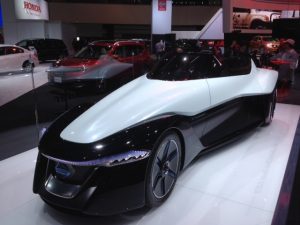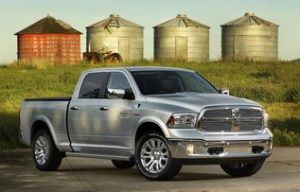“America is addicted to oil, which is often imported from unstable parts of the world.”
President George W. Bush during State of the Union speech, Jan. 31, 2006
I had a fascinating conversation with an economist at a social gathering last week. We discussed the impact of oil imports and exports on the global economy — especially its impact on US energy independence and climate change policies. The US has entered a new place in the world’s oil supply, now exporting more oil than importing it — and less vulnerable to occasionally turbulent global oil prices than was the case years ago.
This economist finds it quite ironic that two other countries have reputations for supporting sustainability and other forward-thinking policies, but are also leading global oil exporters. The US will have to face this scrutiny as well, he said.
One of them is Norway, a leadi ng backer of the UN’s Paris agreement on climate change, and the most impressive nation in the world for per capita electric vehicle sales; along with generous government incentives for EV purchases and charging infrastructure.
ng backer of the UN’s Paris agreement on climate change, and the most impressive nation in the world for per capita electric vehicle sales; along with generous government incentives for EV purchases and charging infrastructure.
Norway was the 13th largest global oil exporter last year, at 1,254,920 barrels per day.
It was named the 20th most oil dependent country in the world during 2016 in another study, with 3.84 percent of its GDP coming from oil revenue, and fuel exports making up 53 percent of its merchandise exports that year. About 45 oil wells were drilled in 2018, up from about 30 in 2017.
Canada, the second nation mentioned by the economist during our conversation, is recognized for having the best healthcare system in the world and for being proactive on climate change through its government’s policies. However, it was the fourth largest oil exporter in the world last year.
Canada exported 3.5 million barrels of oil per day to the US in 2018, 96 percent of all Canadian crude oil exports, according to Natural Resources Canada. Canada supplied 43 percent of US oil imports last year; followed by Saudi Arabia, Mexico, Venezuela, and Iraq.
The US was the eighth largest oil exporter last year. Saudi Arabia and Russia were No. 1 and No. 2. Saudi Arabia has much larger export volume than any other country in the world.
2018 Largest Oil Exporters — Barrels Per Day
1. Saudi Arabia — 8,300,000
2. Russia — 5,225,000
3. Iraq — 3,800,000
4. US — 3,770,000
5. Canada — 3,596,690
6. UAR — 2,296,473
7. Kuwait — 2,050,030
8. Nigeria — 1,979,451
9. Qatar — 1,477,213
10. Angola — 1,420,588
Sources: CIA World Factbook and US Energy Information Administration
The US is not an oil-dependent country on the import vs. export ratio as of 2019, but the addiction to petroleum continues. On the bright side, the US is less dependent on OPEC, the league of oil producing nations that caused energy and economic chaos in the US twice in the 1970s (along with the Iranian revolution in 1979) — and that continues to be a major power player in the global oil market.
The US is now exporting crude oil to more nations than it’s importing from, the Energy Information Administration said in a new analysis in late October. During the first half of the year, US crude oil exports average 2.9 million barrels per day, according to the EIA, a number that’s gone even higher in the second half of 2019. In the first seven months of this year, the US imported oil from a maximum of 27 nations during a given month; that had gone as high as 37 nations a decade earlier.
A surge in domestic production has made the US a crude oil export powerhouse, a goal that had been the basis of the Bush administration’s energy policies in the previous decade that first created the Energy Policy Act of 2005; and with some of it carried over to the Obama administration. Bush’s famous State of the Union quote on oil addiction has been used as both an irony (raising the question: How serious was the Bush administration on weaning the US off petroleum?), and supporting moves to stabilize US energy through reducing oil imports from countries like Iraq and Kuwait where America had sent troops to; and other countries, especially OPEC members, with hostile attitudes and actions toward the US.
The Energy Policy Act promoted US nuclear reactor construction through incentives and subsidies — which has since been discredited and sidelined following Japan’s Fukushima Daiichi nuclear disaster in 2011. The Act also provided loan guarantees to entities that develop or use innovative technologies that avoid the by-production of greenhouse gases.
The Act also launched the Renewable Fuel Standard that requires transportation fuel sold in the US to include a minimum volume of renewable fuels. The RFS was expanded and extended in the Energy Independence and Security Act of 2007. These federal laws were where standards came from governing the amount of biofuel that must be mixed with gasoline sold in the US. It soon because the source of a battle between oil companies and refineries versus corn farmers and ethanol producers.
Crude oil is produced in 32 US states and in US coastal waters, according to EIA. In 2018, about 68 percent of total U.S. crude oil production came from five states. Texas is the leader with 40.5 percent of domestic oil coming from that state. North Dakota was the second largest at 11.5 percent, followed by New Mexico at 6.3 percent, Oklahoma at 5 percent, and Alaska at 4.5 percent of domestic crude oil last year.
It’s one of the reasons gasoline is much cheaper in Texas than other states that have to ship and pipeline over their oil and might have state regulations that raise the price at the pump. For example, gasoline recently has been more than $4 a gallon at some California gas stations. In Texas, it’s been a little bit over $2 a gallon.
The US has seen its supply of oil and natural gas surge over the past dozen years through domestic wells and with natural gas coming much more from shale gas fields. Hydraulic fracturing (“fracking”) has been the key driver of change in domestic fuel — where oil and gas are extracted from tiny pores in rock formations coming from shale, sandstone, and limestone. Fracking breaks up the rock in formations creating pathways drawing out oil and gas from the rock layers. It involves forcing water, chemicals, sand, or other materials under high pressure into the wells. Steam, water, or carbon dioxide (CO2) can also be injected into a rock layer to help oil flow more easily into production wells.
Fracking has been the source of public protests and litigation from environmental groups, pushing the federal government to enforce regulations. It won’t be going away anytime soon with advocates insisting its become safer and an economical use of clean energy. Critics say fracking brings devastating consequences to drinking water supplies, air pollution, releasing more greenhouse gases, and triggering earthquakes.
More recently, new applications of fracking technology and horizontal drilling have led to the development of new sources of shale gas that have offset declines in production from conventional gas reservoirs, and has led to major increases in reserves of US natural gas. Oil supply has been helped by the Trump administration weakening environmental regulations for offshore and land oil drilling.
What does it mean for transportation fuel in the US going into next year?
The EIA expects regular gasoline retail prices to average $2.65 per gallon in November and fall to $2.50 per gallon in December. The agency forecasts that the annual average price in 2020 will be $2.62 per gallon. EIA expects that Brent and West Texas Intermediate oil prices will see gradual changes next year — up to $65 per barrel compared to $61 this year for Brent; WTI prices are expected to be about $4 per barrel lower than Brent in late 2019 and throughout 2020.
The US Dept. of Energy’s Alternative Fuels Data Center sees price stability for these fuels since 2014 — compressed natural gas, liquefied natural gas, propane, electricity, ethanol (E85), and biodiesel (B20 and B99-100). Gasoline and diesel have seen more fluctuation in the past five years, but have stayed within a $2 to $3 per gallon national average (with diesel slightly over $3 lately).
Electric vehicle sales are down now in the US, and fuel-efficient smaller cars and crossovers have been down in sales compared to trucks and SUVs since oil prices plummeted downward in 2014.
Spiking oil prices in 2008, and periods of turbulent pricing in 2010 through 2012, helped automakers sell smaller vehicles, EVs, hybrids, and smaller crossovers. All of that changed in 2014 when oil prices plummeted downward — and gasoline and diesel pricing also dropped — helping pickups and SUVs take the lead in new vehicle sales.
Being less dependent on oil imports has helped US gasoline and diesel prices remain stable and less prone to price spikes than a decade ago — less affected by decisions made by OPEC and disruptive events in key supplier markets. It also raises the bar on making the case for consumers and fleets to purchase new vehicles powered by electricity, hydrogen, propane autogas, natural gas, and renewable fuels.
And in other news……..
Ford is rolling out the 2021 Ford Mustang Mach-E electric crossover SUV at this week’s LA Show press days. It  will have two different battery sizes, with one of them having the capacity to go up to 300 miles per charge. Buyers can also choose from rear-wheel drive, all-wheel drive, and different power outputs. Ford thinks the Mach-E will make a big splash, its first ever all-out competition against Tesla and the majors, tapping into the performance history and style of the Mustang. EVs are expected to play the leading role at this year’s LA Auto Show product launches, with the Audi E-Tron Sportback and, post-show, Tesla’s Cybertruck. Overall, new SUVs/crossovers will be the leading vehicle classification on display.
will have two different battery sizes, with one of them having the capacity to go up to 300 miles per charge. Buyers can also choose from rear-wheel drive, all-wheel drive, and different power outputs. Ford thinks the Mach-E will make a big splash, its first ever all-out competition against Tesla and the majors, tapping into the performance history and style of the Mustang. EVs are expected to play the leading role at this year’s LA Auto Show product launches, with the Audi E-Tron Sportback and, post-show, Tesla’s Cybertruck. Overall, new SUVs/crossovers will be the leading vehicle classification on display.
California announced yesterday that it will halt all purchases of new vehicles for state government fleets from General Motors, Toyota, Fiat Chrysler, and other automakers backing the Trump administration in a battle to strip the state of authority to regulate tailpipe emissions. It’s been a good market for OEMs on the fleet side; between 2016 to 2018, the state said it purchased $58.6 million in vehicles from GM, $55.8 million from Fiat Chrysler Automobiles, $10.6 million from Toyota, and $9 million from Nissan.
Volkswagen’s Electrify America announced today an agreement with Lyft to provide the ride-hailing company’s Express Drive program renters of electric vehicles with convenient and included charging on its DC fast charging network. Express Drive is Lyft’s short-term car rental program that gives people wanting to drive on its platform access to an electric vehicle through its rental providers.

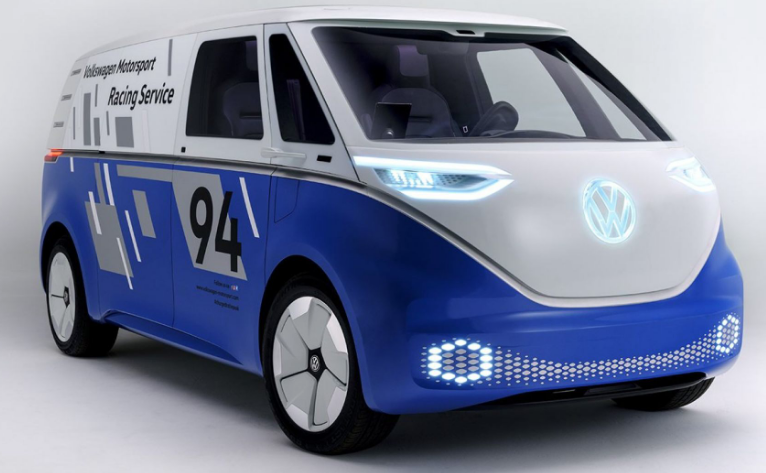 its retro-passenger microbus. It’s the largest vehicle to be built on the German automaker’s Modular Electric Drive Kit (MEB) platform, and it will be getting an expanded version of the microbus with a large rear cargo area in lieu of seats. It will also get a battery pack capable of going 340 miles on a charge. On the other side of the urban mobility scale, the company unveiled the Cargo e-Bike, a three-wheeled, battery-assisted electric bike that it says can deliver cargo up to 463 pounds. It’s expected to enter production in 2019.
its retro-passenger microbus. It’s the largest vehicle to be built on the German automaker’s Modular Electric Drive Kit (MEB) platform, and it will be getting an expanded version of the microbus with a large rear cargo area in lieu of seats. It will also get a battery pack capable of going 340 miles on a charge. On the other side of the urban mobility scale, the company unveiled the Cargo e-Bike, a three-wheeled, battery-assisted electric bike that it says can deliver cargo up to 463 pounds. It’s expected to enter production in 2019.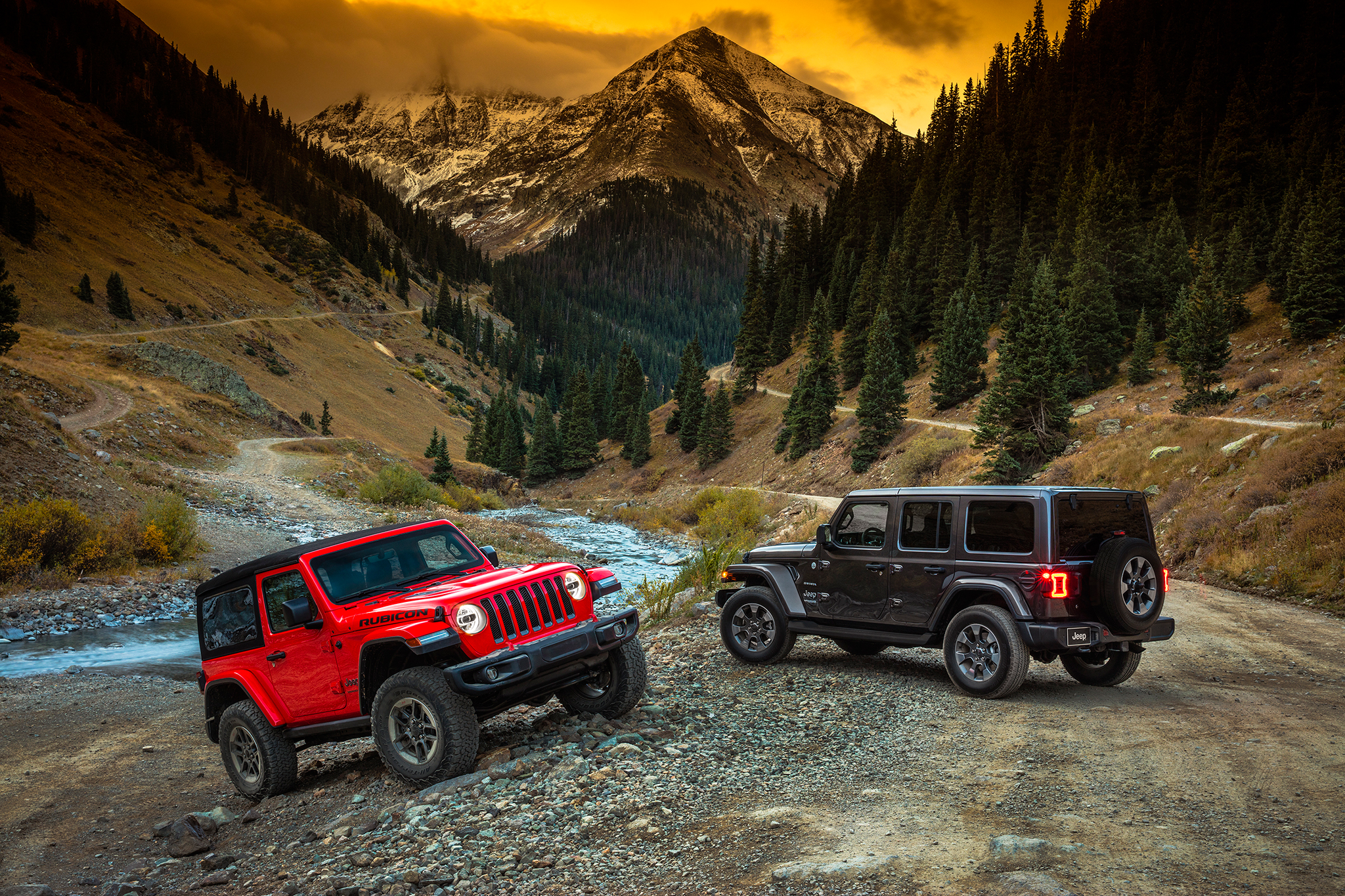 the refreshed 2018 Jeep Wrangler will come out
the refreshed 2018 Jeep Wrangler will come out  and economically feasible it is – is always being asked by fleet operators and other parties. Animal waste is much more appealing than natural gas, taking the landfill mass typical to agribusiness states like California and using it for something constructive. During the LA Auto show,
and economically feasible it is – is always being asked by fleet operators and other parties. Animal waste is much more appealing than natural gas, taking the landfill mass typical to agribusiness states like California and using it for something constructive. During the LA Auto show, 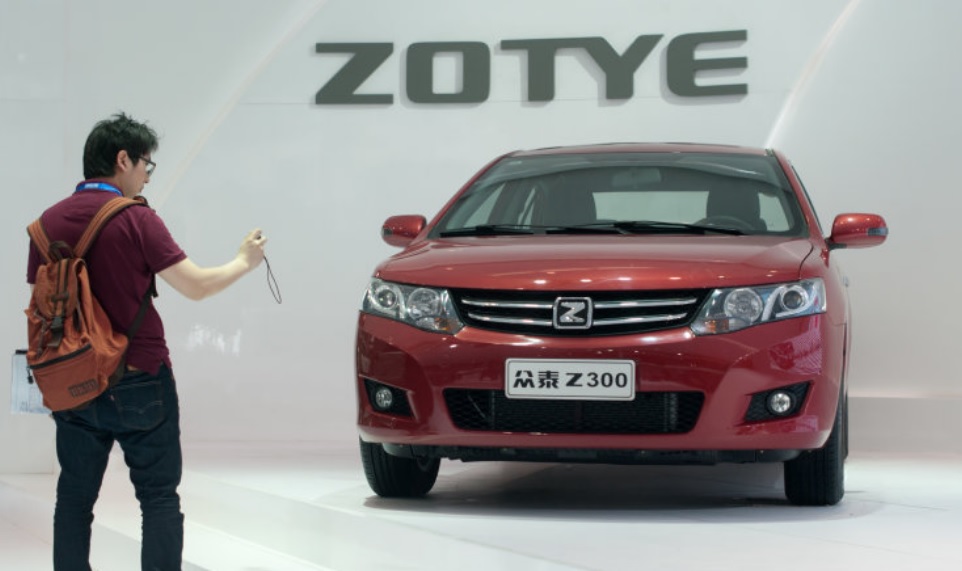 range of stylish and affordable all-electric vehicles for consumers in China under a new local brand. If it achieves regulatory approval, the new JV will design, build, market and distribute all-electric passenger vehicles for the Chinese market. The Detroit automakers already has JVs in place with Changan Ford Automobile Corporation, Ltd. and Jiangling Motors Corporation. Ford will continue working closely with each of its JV partners to develop and manufacture new energy vehicles to meet rising consumer demand in China during the impending electrification phase of the Chinese auto industry.
range of stylish and affordable all-electric vehicles for consumers in China under a new local brand. If it achieves regulatory approval, the new JV will design, build, market and distribute all-electric passenger vehicles for the Chinese market. The Detroit automakers already has JVs in place with Changan Ford Automobile Corporation, Ltd. and Jiangling Motors Corporation. Ford will continue working closely with each of its JV partners to develop and manufacture new energy vehicles to meet rising consumer demand in China during the impending electrification phase of the Chinese auto industry. Angeles Convention Center, Nov. 27-30, 2017. Debut vehicles will be shown right after at the 2017 LA Auto Show, which will be open to the public Dec. 1-10. The AutoMobility LA conference will feature more than 50 thought leaders across several panels, discussions, and keynote addresses. The Top 10 Startups challenge sets ten startups apart from thousands of newcomers, earns them a tremendous amount of media exposure, and places their products/services on AutoMobility LA’s global stage. Automakers are expected to conduct more than 50 world-class debuts at the event. BMW will be making nine debuts during its press conference, including two global debuts. Porsche will launch the global reveal of the Panamera Turbo S E-Hybrid Sport Turismo. Green Car Journal will announce the winner of the 2018 Green Car of the Year award. The 2018 nominated models include the Honda Accord, Honda Clarity, Hyundai Ioniq, Nissan Leaf, and Toyota Camry. The announcement will take place at the LA Convention Center on Thursday, Nov. 30, at 8:00 a.m. PST inside the Technology Pavilion.
Angeles Convention Center, Nov. 27-30, 2017. Debut vehicles will be shown right after at the 2017 LA Auto Show, which will be open to the public Dec. 1-10. The AutoMobility LA conference will feature more than 50 thought leaders across several panels, discussions, and keynote addresses. The Top 10 Startups challenge sets ten startups apart from thousands of newcomers, earns them a tremendous amount of media exposure, and places their products/services on AutoMobility LA’s global stage. Automakers are expected to conduct more than 50 world-class debuts at the event. BMW will be making nine debuts during its press conference, including two global debuts. Porsche will launch the global reveal of the Panamera Turbo S E-Hybrid Sport Turismo. Green Car Journal will announce the winner of the 2018 Green Car of the Year award. The 2018 nominated models include the Honda Accord, Honda Clarity, Hyundai Ioniq, Nissan Leaf, and Toyota Camry. The announcement will take place at the LA Convention Center on Thursday, Nov. 30, at 8:00 a.m. PST inside the Technology Pavilion.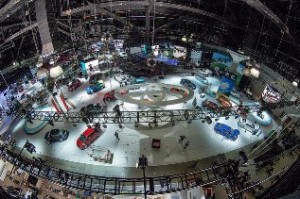 Electric launches at LA Auto Show: Along with crossover utility vehicles, plug-in electrified vehicles will see a few North American launches at the LA Auto Show.
Electric launches at LA Auto Show: Along with crossover utility vehicles, plug-in electrified vehicles will see a few North American launches at the LA Auto Show. 